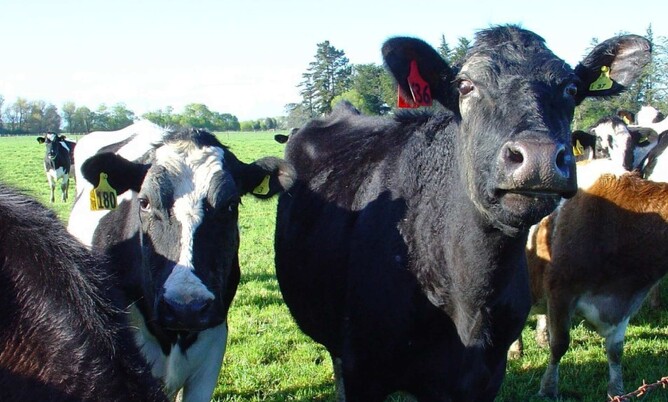Bovine Viral Diarrhoea (BVD) is a widespread viral disease which costs New Zealand agriculture (Beef and Dairy) $150 million in lost production, decreased reproduction and animal losses each year. It has been reported to cause an average of 5% decrease in pregnancy rate on affected farms.
This is due to early embryonic deaths, mummified foetuses, abortions and reduced bull fertility. In calves the disease can cause scouring, poor growth, coughing, ulcers in the mouth, and lameness.
Now is the ideal time to screen your herd to check for permanently infected animals (PI’s) before any infection has a chance to affect mating. A BVD infection in your herd during pregnancy can create Persistently Infected (PI) calves which become new sources of BVD infection within your system.
Screening the milking herd, yearling heifers and bulls for mating is a simple process.
- Milking herd: A bulk milk sample is taken from the vat and tested for BVD antibody and BVD PCR (virus DNA). A high antibody result suggests that the cows have been exposed to the virus and a positive PCR result suggests that there is one or more persistently infected cows in the milking herd who are spreading the virus. You must record which cows are not in the vat at the time the sample was taken, because the bulk milk sample PCR test may be negative if there is a persistently infected cow that was not milked into the vat that day.
- Dry stock (Yearling heifers, beef cows, bulls, steers): 15 blood samples are taken to test for BVD antibody. A high antibody result suggests that there is a persistently infected animal in the group.
If there is a high antibody result in drystock or a positive PCR in bulk milk then each individual in the group will need to be blood tested to identify and cull the persistently infected animal. There are a few ways that this can be done which your vet will discuss with you.
- Breeding Bulls: Bulls to be used for mating are usually individually blood tested and then vaccinated.
- Calves: Calves require each individual to be tested as the antibody test is not accurate until they are over 10 months old. A pooled PCR of all the samples is the most useful and accurate test. If the pooled result is positive then the lab will run each individual sample separately. Pooled PCR requires either blood or ear notch samples. Any calves that are persistently infected will need to be culled immediately.
Biosecurity
Once your herd has cleared BVD, it is important to prevent disease re-introductions from other outside sources. This might include:
- Vaccinating heifers and dams that will be grazed or moved off-site during any stage of pregnancy
- Testing all purchased stock for BVD virus prior to moving them onto farm
- Maintaining good fence line boundaries between your cattle and neighbouring stock to prevent nose-to-nose contact
- Cleaning and disinfecting all clothing, vehicles, and equipment that have been in contact with other cattle
If you cannot effectively prevent BVD from crossing your farm boundary, then you may also have to consider long-term vaccination of all breeding dams and bulls prior to mating.
Vaccination
Vaccination has the greatest potential benefit for
- Any herds that cannot prevent BVD from being re-introduced over time through contact with infected cattle or equipment from other farms
- Extensive beef herds that cannot test and remove PI calves before the planned start of mating. Although the currently available BVD vaccines can’t completely stop animals from becoming infected with BVD, they will significantly reduce the severity of clinical signs and stop the virus from crossing the placenta to harm the foetus, which will effectively reduce or eliminate the development of PI calves, weak calves, and calves with birth defects. Annual surveillance testing of newborn calves would still be recommended to identify any “breakthrough” PI calves which may have been born in spite of vaccination.
- Louise Hughes

